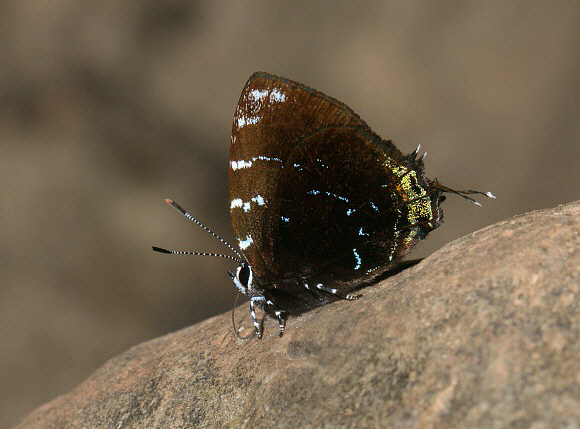
Introduction
Almost all neotropical Theclinae species are placed in the Eumaeini. The tribe is not particularly well represented in collections, so until fairly recently a high percentage remained unstudied, and were inappropriately filed away in the ‘convenience’ genus Thecla. Many taxonomists have attempted to rationalise the systematics of the Eumaeini, the most recent being Robbins who published a revision in 2004, reclassifying the taxa into 83 genera. Currently there are 1058 known species. Taking into account their small size, secretive behaviour, and the great similarities between many species, it is estimated that about another 200 species probably remain to be discovered.
There are 16 Ocaria species. Males of most species have a large patch of metallic blue or turquoise scales over the basal area of fore and hind wings. This is particularly evident in cinerea, arpoxais and clepsydra, but in thales the blue is restricted largely to the hindwing margins. The females of all Ocaria species are dull earthy brown on the upperside, with the blue scaling greatly reduced – or in the case of thales, absent.
The undersides vary somewhat – aholiba for example has a brown ground colour with a pattern of thin white ‘hairstreak’ stripes, while the underside of clenchi has purple sheen and is marked with a single jagged reddish-brown stripe. In most species however the undersides are blackish, mottled with grey and white. The hindwings of most species have a pair of filamentous tails, one longer than the other.
Ocaria thales is common and widespread, being found across most of the upper Amazonian region including Venezuela, Surinam, Ecuador, Peru, Bolivia and Brazil.
Habitats
This species is found in rainforest at altitudes between about 200-900m. It tends to be seen most often in glades and light gaps in the forest.
Lifecycle
To be completed.
Adult behaviour
The butterflies are usually encountered as singletons, seen imbibing honey-dew (aphid secretions) from the foliage of trees and bushes.

